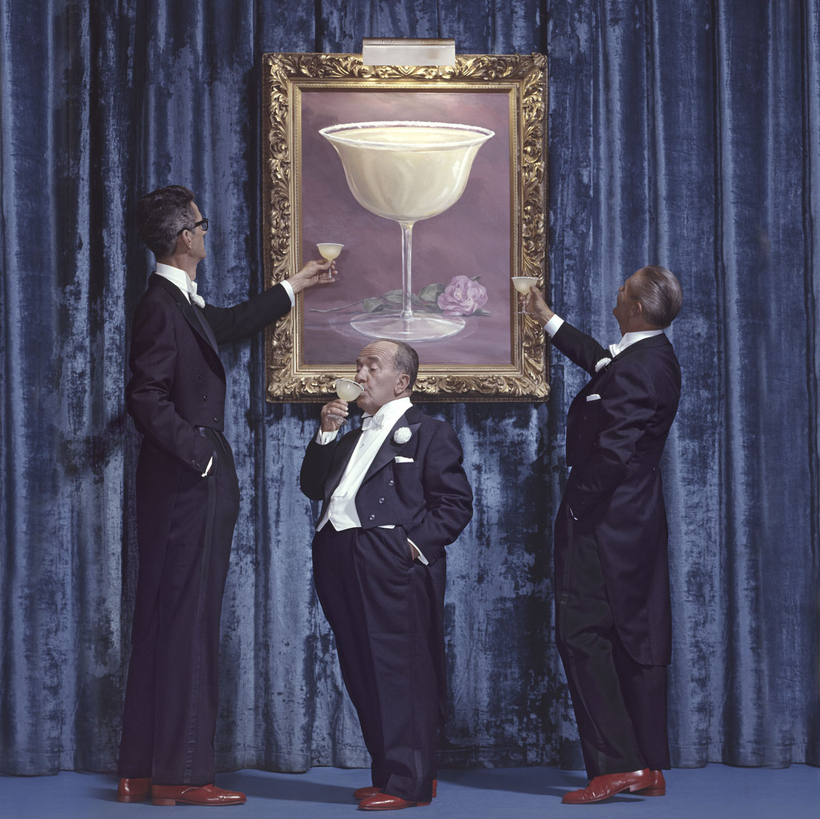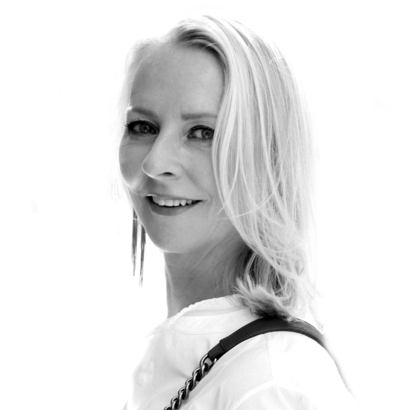At a new, cool, constantly booked Parisian bistro last month, I asked the waiter if they had any alcohol-free drinks. An enthusiastic yes! “Orange juice, artisanal cola, water, sparkling water.” That waiter may be among the last to hear about the explosion of sober and sober-curious customers yearning for something less boring than water, less sweet than juice, and less garbage than Coke, or even, respectfully, artisanal cola. Every other restaurant seems to be catching the buzz.
Reformed drinkers are sampling dry January, dry July, sober October, and months that don’t even rhyme (parched March?). For the abstemious, there are wine and liquor stores—Boisson, Spirited Away, the New Bar, and Soft Spirits—that sound boozy but sell no wine or liquor. La Grande Épicerie, the stylish food market in Paris owned by LVMH, devotes valuable real estate to alcohol-free bottles. So does Selfridges in London. Even on the flight from New York to Paris on the business-class airline La Compagnie, I was offered a glass of bubbly from French Bloom, a sparkling wine with 0.0 percent alcohol by volume. Don’t mind if I do.
Longevity gurus, podcasters, internists, and chiropractors have finally penetrated our foggy and perhaps hungover brains, and the evils of alcohol are sinking in at last. There’s the inflammation. The assaults on the liver, sleep, cognition, skin, and the gut microbiome. There’s the impairment and general assholery. Alcohol is “the only drug that if you don’t do it, people think you have a problem,” says Maggie Frerejean-Taittinger, a co-founder of French Bloom and a former director of the Michelin Guide. “But that will change.”
It already is. Seemingly out of nowhere, alcohol-free spirits, wines, beers, and mocktails are flourishing, each one more creative and more complex than the last. Sales of non-alcoholic spirits soared 113 percent from 2020 to 2021, according to a Nielsen survey.
“In the beginning, we were rocking a non-alcohol beer and a Phony Negroni, and we sold out all the time,” says Christine Wiseman, global beverage director at Bar Lab, which has bars and restaurants in Los Angeles, Miami, and N.Y.C.
Those early concoctions were often sweet and simple, “like a fruit salad,” says Constance Jablonski, the other co-founder of French Bloom. Even the word “mocktail” suggests a juvenile trick or a farce. Are you mocking me, glass of pineapple juice and club soda, with your cute sprig of mint? Wiseman, who won a national bartender-of-the-year award in 2023, can’t stomach it. “I’m pretty passionate about the word ‘mocktail’ and how much I hate it.” Instead, she prefers “spirit-free” and constructs tasting menus with non-alcoholic-drink pairings—milk punches, espresso martinis, and botanical concoctions with herbal shrubs.
French Bloom aims to bring the sophistication of champagne, with its celebratory pop of the cork, its gentle fizz, and its crisp flavor to the alcohol-free experience. “We wanted to create something that had everything we love about champagne,” says Frerejean-Taittinger. “So you have the attaque en bouche,” the first impression that the wine makes on the palate. “When you drink champagne, you have this surge of beautiful acidity,” she says. “Then there’s this roundness—there’s an aromatic journey.” The blanc starts with pear and white-flesh fruit with citrus and tropical notes. The rosé delivers white peach followed by a suggestion of rose petal. Do you like my impression of an oenophile?
It’s no small feat to produce this blend in France, especially when your married name includes the word “Taittinger.” Maggie’s husband, Rodolphe, a descendant of the Taittinger champagne family and a wine-maker for Frerejean Frères, also works on French Bloom. Even so, it took about 70 iterations to reach the current blend.
“At the beginning, it tasted terrible, terrible,” says Jablonski. Despite the pedigree of the grapes—organic Chardonnay and Pinot Noir from the Languedoc region—and the proper aging in oak barrels to give it the “Chardonnay old-vintage flavor,” says Frerejean-Taittinger, it was wan and dull. The wine-makers, including one from Krug, decided instead to complete the fermentation process and then extract the alcohol. “We de-alcoholized a wine that’s already finished and then added organic aromas, fruit aromas … to try to re-create that architecture,” Jablonski tells me.
The result doesn’t have the vinegary bite of many non-alcoholic wines. It’s also organic, sulfite-free, and low in sugar. “If we do an alternative to alcohol, it has to be healthy because you don’t want to waste your healthy choices on something full of sugar,” Jablonski says.
If there’s one thing as demonized as alcohol, it’s sugar. And that explains the move away from the saccharine, Shirley Temple approach of early mocktails. Otherwise, “everything is lemonade-y and one-dimensional, like a TGI Friday’s menu,” says Deva Esposito, a bartender at Cucina 24 in Asheville, North Carolina, who previously worked at Maison Premiere in Brooklyn and Boulevard in San Francisco. “We rely more on teas, juices, syrups, ginger, so [the drinks] don’t look or feel homogenous.”
The focus is more on these herbal, savory, or bitter mixes rather than on the alcohol. At the Happiest Hour, a cocktail bar in the West Village, “all our drinks start out as non-alcohol batches that you could add alcohol to,” says Jon Neidich, the founder and C.E.O. of Golden Age Hospitality, which owns the Happiest Hour, the Nines, Acme, and Le Dive.
Neidich has seen a big shift in behavior since he acquired Acme, in 2012. Then, people went out drinking. On a Tuesday night. “In the mid-2000s, there wasn’t an Equinox culture and Juice Presses everywhere. There wasn’t a lot of mindfulness,” he says.
Now Gen Z is hitting the dance floor. Drinking rates among those under 34 have tumbled, with 52 percent saying that “moderate drinking is unhealthy,” according to a recent Gallup poll. “Alcohol is to Gen Z what tobacco was to our generation,” says Frerejean-Taittinger. But “it’s not always sober, clean living,” adds Neidich. “Instead of drinking at a party … they’re trying alternative ways to have a buzz.” Even the upright people at Gallup acknowledge the popularity of weed and weed gummies, even though they call it “marijuana.”
Many fans of non-alcoholic drinks aren’t swearing off booze entirely. They’re drinking less, drinking situationally, and exploring alternatives. “About 80 percent of our customers actually do drink,” says Frerejean-Taittinger, who counts herself among that population. “In the same evening, they might start with a glass of wine or champagne and then switch to French Bloom.”
That may explain why French Bloom has infiltrated the least likely places, including Ibiza nightclubs and Coachella. At Erewhon, the glamorous health-food stores in and around L.A., it’s the best-selling brand in the wine shop, Frerejean-Taittinger says.
The most skilled bartenders are looking for ways to enhance the whole alcohol-free existence, making drinks that look like actual cocktails and removing the stigma of not imbibing. It starts with the order. “When people ask for a non-alcoholic drink, they shouldn’t be asked, ‘Why?Why are you not drinking?’” says Wiseman. “I’ll take two to three months off at a time, and I’m wild and crazy. I don’t need to explain to you why I’m not drinking.” That’s what inspires her cocktails: “To make something delicious instead of shaming you.”
Esposito, who’s been sober for three years, gravitates to anything that doesn’t come in a Collins glass. “Non-alcoholic drinks are best when they have variety physically,” he tells me.
Frerejean-Taittinger talks of “giving you that feeling of drinking something special, festive, having the flute in your hand, having that elegant moment where you can ‘cheers’ with other people around you, whether they’re drinking or not.”
So belly up to the bar. Join the party. “Drinking is fun,” says Wiseman. “And not drinking should be fun, too.”
Linda Wells is the Editor at Air Mail Look


